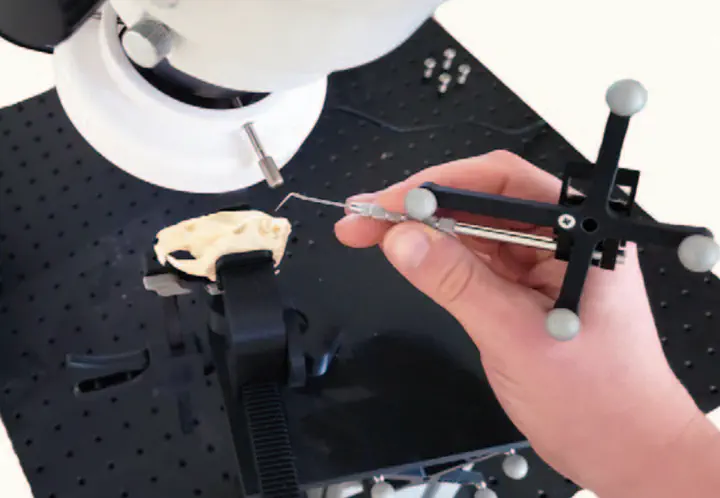Estimating the Pose of a Guinea-pig Cochlea Without Medical Imaging

Abstract
- Hypothesis: The pose (i.e., position and orientation) of a guinea-pig cochlea can be accurately estimated using externally observable features, without requiring computedtomography (CT) scans
- Background: Guinea pigs are frequently used in otologic research as animal models of cochlear-implant surgery. In robot-assisted surgical insertion of cochlear-implant electrode arrays, knowing the cochlea pose is required. A preoperative CT scan of the guinea-pig anatomy can be labeled and registered to the surgical system, however, this process can be expensive and time consuming. Methods: Anatomical features from both sides of 11 guinea pig CT scans were labeled and registered, forming sets. Using a groupwise point-set registration algorithm, errors in cochlea position and modiolar-axis orientation were estimated for 11 iterations of registration where each feature set was used as a hold-out set containing a reduced number of features that could all be touched by a motion-tracking probe intraoperatively. The method was validated on 2000 simulated guinea-pig cochleae and six physical guinea-pig-skull cochleae.
- Results: Validation on simulated cochleae resulted in cochlea-position estimates with a maximum error of 0.43 mm and modiolar-axis orientation estimates with a maximum error of 8.1 degrees for 96.7% of cochleae. Physical validation resulted in cochlea-position estimates with a maximum error of 0.80 mm and modiolar-axis orientation estimates with a maximum error of 12.4 degrees.
- Conclusions: This work enables researchers conducting robot-assisted surgical insertions of cochlear-implant electrode arrays using a guinea-pig animal model to estimate the pose of a guinea-pig cochlea by locating six externally observable features on the guinea pig, without the need for CT scans.
Type
Publication
In Otology and Neurotology